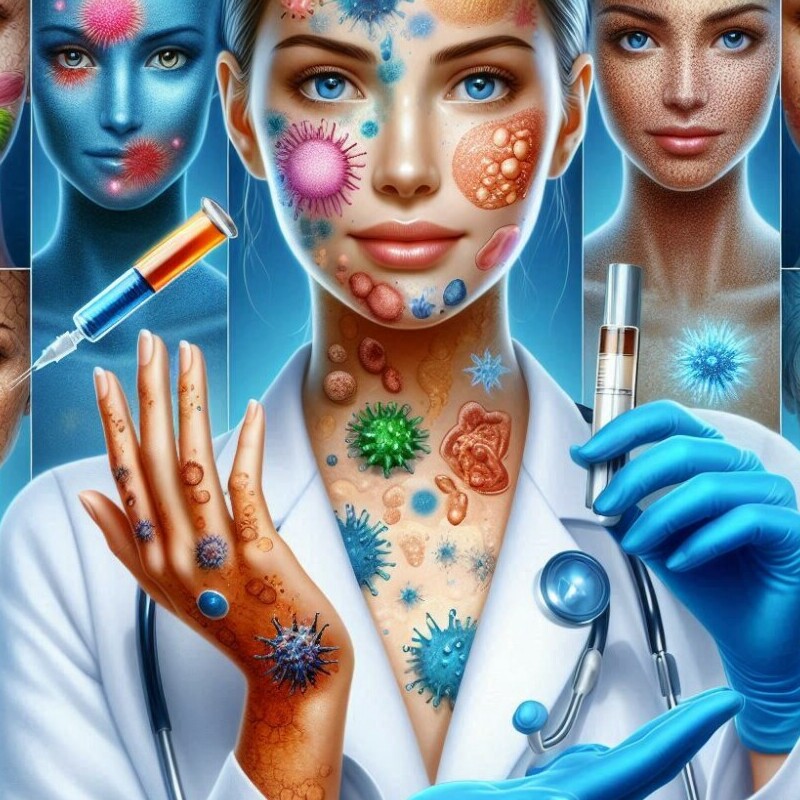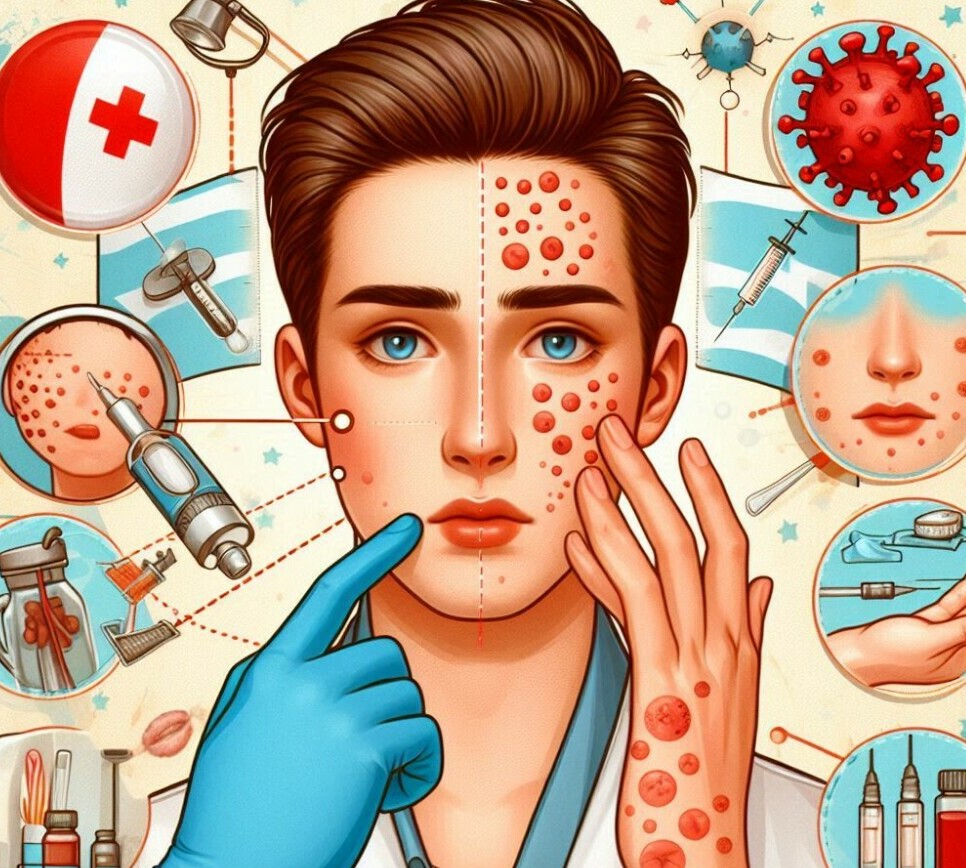
Loss of skin pigmentation, a condition known as hypopigmentation, can be a source of significant concern and emotional distress for those affected. This phenomenon occurs when the skin loses its natural color, leading to patches of lighter skin.
I’m going to kick things off by talking about skin pigmentation, a defining feature of our appearance. It’s what gives our skin its color, and it’s largely determined by a pigment called melanin. The production of melanin in our skin cells, known as melanocytes, can vary, leading to a wide spectrum of skin tones across individuals.
Melanin doesn’t just contribute to our aesthetic; it plays a crucial role in protecting us from the sun’s ultraviolet rays. High melanin levels can offer a degree of safeguard against skin damage and certain conditions caused by sun exposure. So, maintaining the health and balance of our skin pigment isn’t merely about looks—it’s quite literally a matter of protection.
Beyond physical health, skin pigmentation can have deep psychological and social implications. For many, it’s closely tied to identity and cultural heritage. And when disorders affect this pigment, it can lead to more than just a change in appearance; it can impact a person’s self-esteem and how they’re perceived by others.
You’re going to find out that these pigmentation issues are complex and varied. They’re not all just about getting spots or losing color—they’re about the narrative of each person’s life as it’s written on their skin. While pigmentation can change naturally with age or sun exposure, disorders can disrupt this balance, leading to noticeable changes that require professional attention.
Exploring Skin Pigmentation Disorders: Types and Causes

I’m going to unravel the mystery behind a variety of skin pigmentation disorders. You’re going to find out about conditions like vitiligo, which causes loss of skin pigment in blotches; melasma, characterized by brown or gray-brown patches; and albinism, a less common genetic disorder affecting skin, hair, and eye pigment production.
Genetics plays a huge role in skin pigmentation changes. In many cases, disorders like vitiligo and albinism run in families, pointing to heritability factors. It’s not just about genes, though; there’s a complex interplay between heredity and environmental triggers that leads to pigmentation problems.
Now, let’s talk about the environment’s role in altering skin pigment. Sunlight exposure can drive hyperpigmentation issues like sunspots, while also worsening conditions like melasma. On the flip side, certain chemicals and physical trauma can reduce pigmentation, leading to conditions such as hypo- or depigmentation.
But that’s not all. Health conditions can usher in changes in skin pigment too. Thyroid diseases, for instance, are notorious for causing both hyperpigmentation and hypopigmentation. And medications? They can be culprits as well. Some drugs come with the side effect of altering skin color, pointing to the complexity of skin pigmentation dynamics.
The Journey of Changing Skin Pigment: Symptoms and Diagnosis
When your skin starts to show signs of pigment change, it’s critical to pay attention. I’m here to walk you through the symptoms that signal a possible skin pigmentation disorder. You might notice patches that are lighter or darker than your usual skin tone. These can appear anywhere on the body and might grow or change shape over time.
A change in skin pigment isn’t just a visual concern; it can also bring emotional distress. The visibility of conditions like vitiligo or melasma often impacts a person’s self-esteem, and I cannot stress enough the importance of understanding and support during this time.
For accurate identification of what’s happening with your skin, a thorough diagnosis is paramount. Dermatologists usually start with a physical exam and may use specialized lights or devices to observe the pigment changes more closely. They might also suggest a biopsy to rule out other skin conditions.
This isn’t just about identifying a disorder; it’s also about finding the right treatment. With a proper diagnosis, you’re one step closer to addressing your skin’s needs, which might include treatments outlined in the next section of our discussion.

When facing skin pigmentation issues, the next logical step is to seek effective treatment options. It’s essential to customize the treatment to the specific condition and individual needs. This ensures the best possible results. Let’s explore the established treatments for various skin pigmentation disorders and look into promising avenues for future therapies.
Starting with the basics, we have topical agents like hydroquinone and retinoids often prescribed for conditions like melasma. These aim to regulate melanin production and improve the appearance of the skin. Sunscreen is also a hero in the treatment lineup, helping to prevent further discoloration due to sun exposure.
Moving to more advanced interventions, laser therapies are making significant strides. For instance, Q-switched lasers are used to target and break down unwanted pigment in the skin. It’s a cutting-edge approach, although it may not be suitable for all skin types or pigmentation disorders.
Surgical options are also on the table for certain cases. Skin grafting, for example, might be a consideration for vitiligo patients when other treatments have not been successful.
Research is continuously pushing the envelope, and I’m keeping an eye out for groundbreaking treatments on the horizon. Just don’t focus too much on perfection here. Treatments can be effective, but outcomes often vary.
Alongside these medical treatments, emotional and psychological support is vital. Dermatologists, therapists, and support groups can provide the needed guidance and reassurance during often challenging times.
Choose something that resonates with you, whether it be pursuing treatment, seeking support, or perhaps both. Remember, you’re not alone on this journey. With the right team and a bit of patience, managing skin pigmentation issues is a path toward not just healthier skin, but often a more confident self.
While it can be a result of various medical conditions, understanding the underlying causes is essential for effective treatment and management
By staying informed and seeking professional medical advice, individuals can better navigate the complexities of this condition and work towards restoring their skin’s natural appearance.
Kindly leave your comments and experiences below.
Simplified. Turn YOUR Passion, Hobby or Interest into YOUR Success Story! Join Wealthy Affiliate today: https://www.
**Here’s a little transparency: Our website contains affiliate links. We may receive a small commission if you click and make a purchase. Don’t worry, as there’s no extra cost to you. It’s a simple way to support our mission of bringing you quality content.
Follow me on social media!

It dives into the different causes behind conditions like vitiligo, melasma, and albinism, and how factors like genetics, environment, and even certain medications can mess with your skin color. The piece also talks about the psychological impact of these changes and the importance of a proper diagnosis. Did you know that even thyroid diseases can change your skin color? thx in advance mate
Hi Oxteumessia,
Thank for your insights on the article.
Your contributions on the connection between thyroid and diseases and skin colour changes is particularly interesting.
I appreciate the information. Understanding the psychological impact and importance of a proper diagnosis is very important.
Its also fascinating how genetics, environment and some medications can influence conditions like vitiligo, melasma, and albinism.
I appreciate your contributions and support.
Regards,
Makinde
Your article provides a comprehensive overview of skin pigmentation issues, from causes to treatments. It’s enlightening to see the interplay between genetics and environment. Sometimes, discoloration can come from skin infections such as “tinea-vesicolor” which is fungal disorder that cause dark patches that look like burn spots. After the patch drops, it leaves a lightened area on the skin. Also age plays a part in loss of pigmentation ” light freckles” in darker skinned population while an increase in pigmentation”age spots” happens with lighter skinned population, which changes have to do with changes in melanin production from hormonal changes. It is good to have a check up with a good dermatologists for any skin concerns. Thanks for the valuable information!
Hello Delois,
I appreciate your comments and contribution to the article.
The age-related pigmentation changes and skin infections like tinea versicolor in different skin types you pointed out are worth noting.
However, just like you rightly noted, consulting a dermatologist is essential for proper diagnosis and treatment
Thank you for your kind words and insight.
Regards,
– Makinde
.